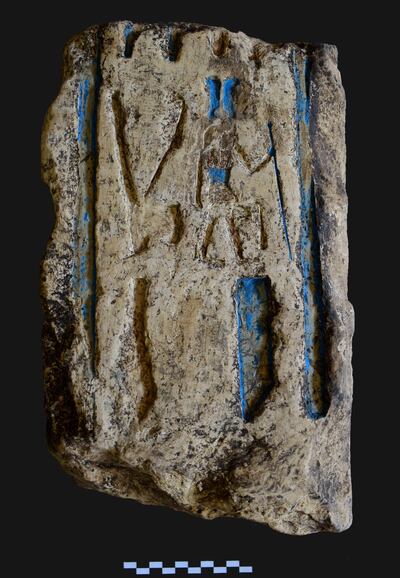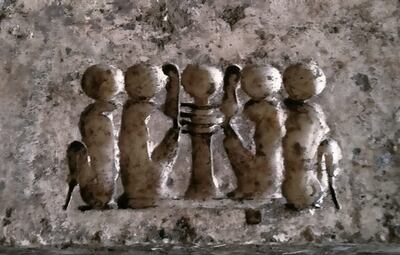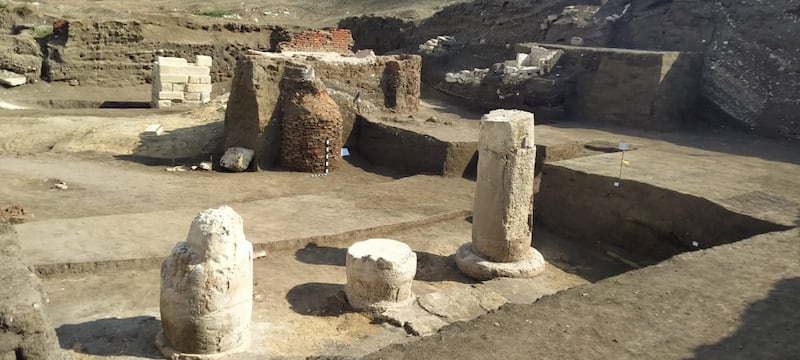An Egyptian archaeological mission at the ancient Buto Temple in the country's north has unearthed the remains of a colonnaded hall.
Egypt's Supreme Council of Antiquities said the discovery was an important addition to an already prominent heritage site and invaluable to modern scholars’ understanding of temple architecture during Egypt’s New Kingdom period (1550-1069 BC), when the city of Buto and its eponymous temple were believed to have been built.
Buto, in the agricultural province of Kafr El Sheikh, was the name given to the ancient city by the Greeks, who ruled Egypt during the Ptolemaic era. Its ancient Egyptian name was Per-Wadjet, but today it is known as Tel El Farain — meaning Hill of the Pharaohs in Arabic.

The colonnaded hall is believed to have been added to the temple during the Late period of Egypt's history (525-332 BCE), says Dr Ayman Ashmawy, head of the council’s Egyptian antiquities sector.
Also unearthed were Late period ceramic vessels believed to have been used in religious ceremonies in the temple, which was built in dedication to the goddess Wadjet, the matron and protector of Lower Egypt.
Archaeologists also unearthed pieces of stone decorated with friezes depicting worship rituals, Dr Ashmawy said.
The colonnaded hall was found at the south-western end of the temple, with three large columns decorated with drawings of papyrus — a quintessential symbol of Lower Egypt.
The word for “papyrus” in ancient Egypt is "wadj", a homage to the Wadjet who watched over the lower kingdom.
Also unearthed was a limestone slab decorated with a figure with a vulture’s head topped with a white crown, which is a depiction of the deity Nakhbet, Wadjet’s upper Egyptian counterpart, said Prof Qutb Fawzi, head of the Central Administration of Lower Egypt.

Archaeologists also found a stone cabin measuring 6.5m by 4.5m and containing vessels used for sacrificial offerings. Built out of limestone and protected with thick mud brick walls on all sides, it is likely the cabin was used to safely store the totems used for worship at the temple, a common practice in ancient Egypt.
The antiquities council said excavations would continue in the coming weeks, with archaeologists hopeful that the site, which has proven to be fruitful, has more artefacts to uncover.
First discovered in the 19th century by British Egyptologist Flinders Petrie, Buto remained largely untouched until the 1960s.







